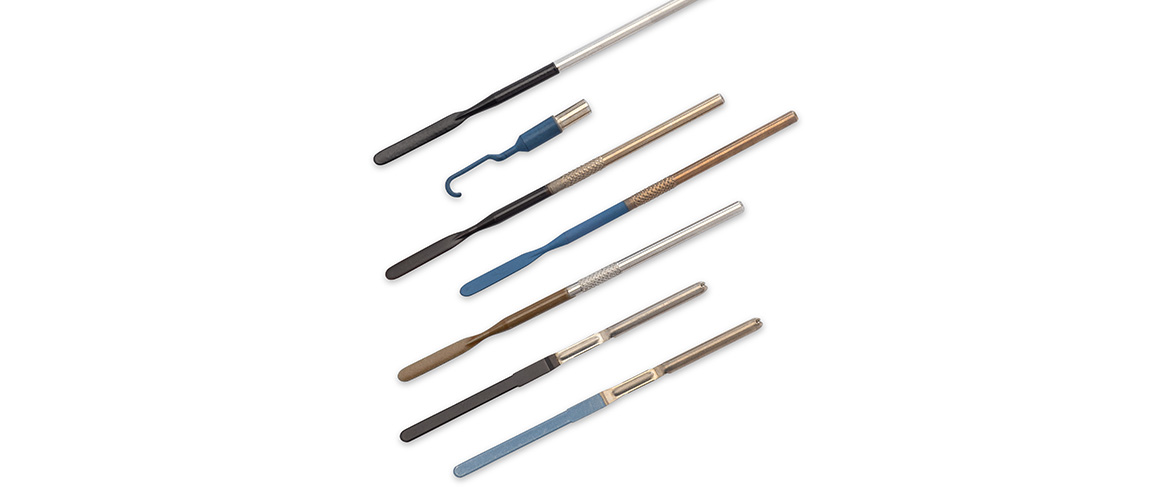Medicine is moving towards more technologically advanced systems and surgeons are the prominent users of these instruments. Disposable electrosurgical blades and tip coatings offer unsurpassed performance and design features.
During surgery, a surgeon needs a set number of tools that are specific to the operation and that must be accounted for throughout the procedure. During electrosurgery high frequency AC energy is used to simultaneously cut and coagulate tissue to minimize blood loss. Oftentimes surgeons have to stop procedures to remove eschar (carbonized tissue) from the stainless steel cutting tips of probes – a common performance problem associated with tools coated with non-stick polytetrafluoroethylen (PTFE). Using ElectroBond coated blades instead can help to prevent eschar buildup and save time during the procedure.
ElectroBond coated blades have less weight buildup of eschar and withstand scratch testing with a tougher coating than PTFE, while still retaining eschar release properties. PTFE coated blades, on the other hand, allow for more eschar adhesion and buildup, and do not hold up as well during scratch tests. These properties also contribute to the use of the ElectroBond medical grade coating, including the ability to remove eschar at the appropriate operating room (OR) temperatures, ranging from 350º-840°F.
With the advanced PFOA-free, thin-film ElectroBond coating made of a hard, porcelain-like silicone based formulation, uniform release along with effective insulation and conduction is achieved. Thus, electrosurgical blades and tip coatings can decrease the initial power surge necessary to create an ionized plasma cutting zone. If desired, ElectroBond can also be developed with anti-microbial properties, allowing for even lower human toxicity risks along with a broad spectrum of antibacterial usefulness.
Electrosurgical blades and tip coatings also have few design limits allowing for various probe shapes, ball, wire, gripper and needle types with bipolar and monopolar designs.
Advantages of coated electrosurgical blades and tip coatings in the operating room include:
- Affordable price
- Better performing medical devices
- Less energy required with ElectroBond
- Safer medical devices
- Successful anti-microbial applications
- Anti-microbial properties with a kill-rate of 99.9% of bacteria, including:
- Escherichia coli
- Staphylococcus aureus
- MRSA (Enhanced protection that prevents adverse patient outcomes)
- S. enteritidis
- V. parahaemolyticus
- Streptococcus
- Aeromonas
- Flavobacterium
- Xanthomonas
- Candida albicans
- Salmonella
- Clostridium difficile
- Enterococcus faecium
- Aspergillus
- Pseudomonas aeruginosa
- B. sutills
- Proteus
- Entero-viruses
- Variable coating thickness
- .0002″-.025″
- Low-friction
